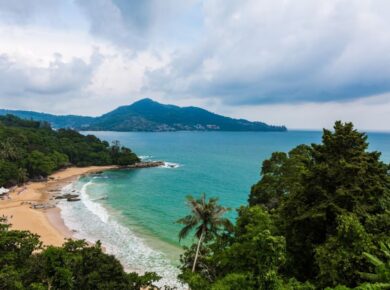Ajanta and Ellora Caves: India’s Timeless Rock-Carved Treasures
The Ajanta Ellora Caves are monuments of Indian craftsmanship from bygone times and a representation of the country’s rich historical culture. They are praised for their artwork, sculpture, and architecture. Both cave systems were formed from the volcanic lava of the Deccan Plateau. Each pillar is made entirely of solid rock.
The Buddha’s smile in his preaching stance, the sensation of an excavated wall, the various tones of color on the cave rock—everything’s just remarkable about these caves. Both of the caves are meant for spectacular adventure; being here will make your feet wander, eyes marvel and soul ignite.
Ajanta and Ellora – Ancient Rock-Cut Caves
Two enormous rock-cut caves, Ajanta and Ellora, are the epitome of Indian art and achievement in architecture. Although these two monuments are almost 100 km apart, they are frequently cited together because of their similar aesthetic value and significance, as well as the fact that they are both located in Maharashtra’s Aurangabad region.

In contrast to Ajanta, which is known for its stunning Buddhist-themed murals on cave walls, Ellora is known for its sculpture and architecture that represent the three major religions that were practiced in that region at the time: Buddhism, Hinduism, and Jainism.
The Fascinating History
The Ellora Caves date to the time between the 6th and 11th centuries AD. They are 34 in number and dispersed in a wider area as compared to the Ajanta Caves. The 29 Ajanta Caves were constructed between the second century BC and the sixth century AD. Visitors from all over the world come here to view the finest examples of Indian Buddhist art.
According to available data, monks and pilgrims seeking spiritual solace in ancient India visited the Ajanta Caves. Later, during the colonial period, the western world learned that they were part of the Hyderabad princely state. The Nizam of Hyderabad had sanctioned the restoration and conservation of these sites. According to a 1983 announcement, the Ajanta and Ellora Caves now form a single UNESCO World Heritage Site.
Many traditionally popular painting, textile, sculpture and mural art forms developed over centuries in distant parts of India owe their origins to the paintings of Ajanta. Paithni sarees (textile) and Patachitra (painting) are such examples.
Attractions around Ajanta Ellora Caves
Though the morning and evening light brings out the hues in the rock, any time of day is appropriate for travelers to visit these local sights. It is possible to go sightseeing, which will take one or two days. The primary draws are life depictions of Buddha, the jaw-dropping Kailasa Temple, massive Buddhist Caverns, intricate Jain Caves, grand Indra Sabha and a few additional caves cut into the rock.

In addition to these marvelous caves, Ajanta’s little flea bazaar is a popular destination for tourists. This location is fascinating since it is rich in the art and culture of many communities. For all you history buffs, there are semi-precious stones, Lord Buddha sculptures, artifacts, silver objects, and other fascinating things from the various stories told on the cave walls! These streets are constantly bustling with tourists from throughout the globe.
In monsoons, the Waghura waterfalls cascade down the cliffs and form refreshing spray umbrellas over the cave entrances. There are trails along the river bed as well as some leading up to viewing points atop the ridge.

The Ajanta Ellora Caves are the product of the labor of men with extraordinary talent and expertise. It is extremely admirable to transform mountain faces into works of art and temples while utilizing just natural light. These historic sites are undoubtedly worth a visit if you want an unforgettable experience. The ambiance of this place sends you to a new world altogether. You may also muse at what tools were used to create the impressive carvings in these discovered caves.
The imagination, design, planning, geometry, trigonometry, sculpting, painting, artistry, material science, scale, timeline are all astounding!
Standing inside one of these caves, one cannot help but wonder how human beings more than two millennia ago could conceive of and undertake such an endeavor.
Looking to travel and experience the culture, food, nature or soak in adventure, explore curated Journeys with UnCrushedLeaves now.




